Bhutan Flag Meaning
Divided diagonally with orange in the upper triangle and yellow in the lower triangle, featuring a white dragon (Druk) in the center holding jewels in its claws, representing the spiritual and temporal power of Bhutan and the Thunder Dragon that gives the country its name 'Land of the Thunder Dragon.'
- Continent
- Asia
- Adopted
- 1969
- Ratio
- 2:3
- Colors
- orange, yellow, white
- Designer
- Unknown
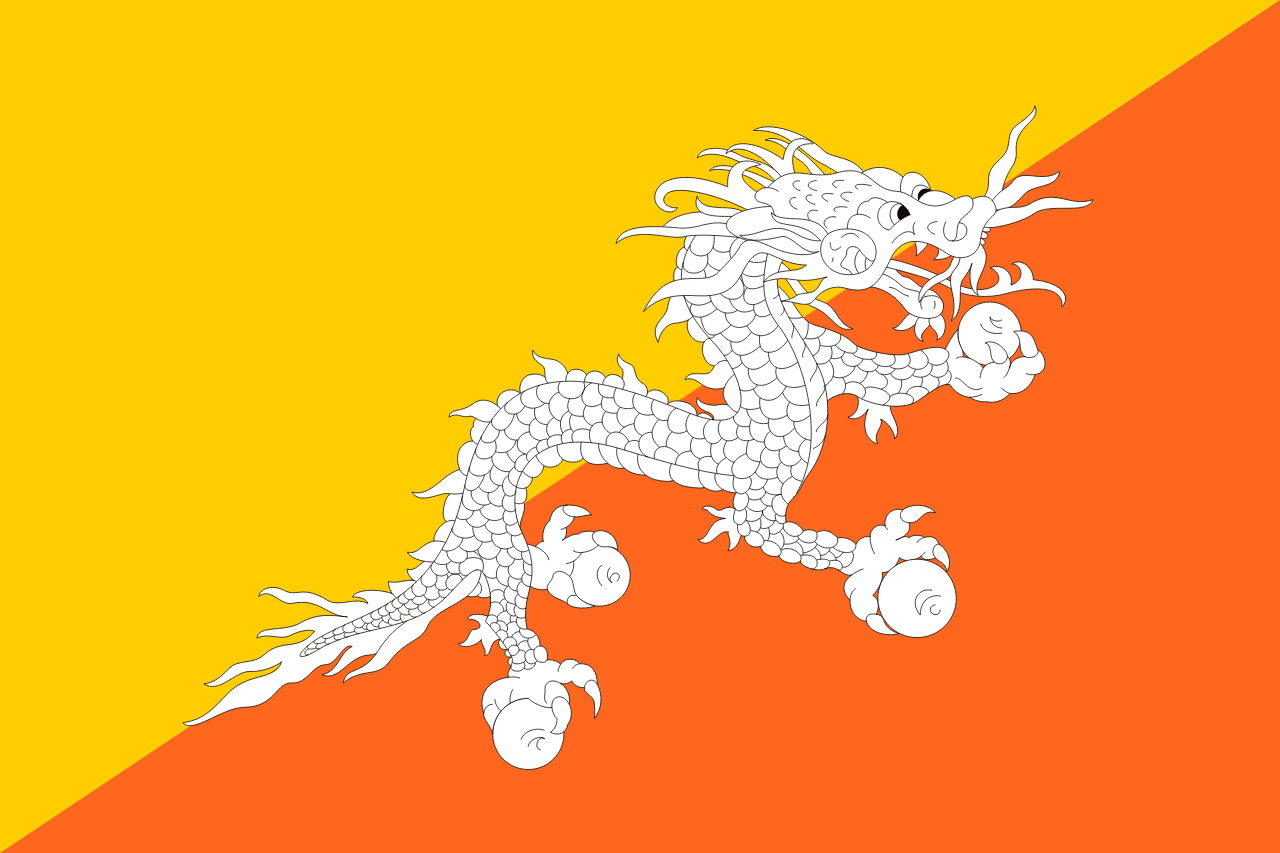
Symbolism
Orange Triangle: Represents the spiritual tradition and Buddhist religion of Bhutan, symbolizing the Drukpa lineage of Mahayana Buddhism that is central to Bhutanese culture and the monastic community's influence in society.
Yellow Triangle: Represents the secular authority and temporal power of the king, symbolizing the monarchy that has ruled Bhutan for centuries and the civil administration that governs the kingdom.
White Dragon (Druk): Represents Bhutan itself, known as 'Druk Yul' (Land of the Thunder Dragon), symbolizing the purity of the country, the protection of the nation, and the fierce loyalty of the Bhutanese people to their homeland.
Jewels in Dragon's Claws: Represent the wealth and perfection of the country, symbolizing the security and prosperity of the nation under the protection of the spiritual and temporal authorities.
History
- 8th Century: Guru Rinpoche (Padmasambhava) introduced Buddhism to Bhutan, establishing the religious foundation that would become central to Bhutanese identity and culture for over a millennium.
- 1616: Zhabdrung Ngawang Namgyal unified Bhutan and established the dual system of government with spiritual and temporal authorities, creating the foundation of modern Bhutanese state structure.
- 1865: The Treaty of Sinchula ended the Duar War with British India, with Bhutan ceding territory but maintaining internal autonomy, beginning limited engagement with the outside world.
- 1907: Ugyen Wangchuck was crowned as the first hereditary king, establishing the Wangchuck dynasty that continues to rule Bhutan today and creating the modern monarchy.
- 1949: The Treaty of Friendship with India replaced British influence, with India guiding Bhutan's foreign policy while respecting its internal autonomy and traditional governance systems.
- 1958: The first version of the current flag design was adopted, featuring the Thunder Dragon on a background divided between spiritual orange and temporal yellow.
- 1972: King Jigme Singye Wangchuck ascended the throne at age 16 and introduced the philosophy of Gross National Happiness, prioritizing holistic development over economic growth alone.
- 1969: The current flag design was finalized with standardized colors and dragon positioning, reflecting Bhutan's unique identity as it began cautious modernization efforts.
- 1974: Bhutan opened to limited tourism for the first time, carefully controlling visitor numbers to preserve culture and environment while generating foreign currency.
- 1998: King Jigme Singye began transferring executive powers to the Council of Ministers, initiating Bhutan's gradual transition from absolute to constitutional monarchy.
- 2006: King Jigme Singye abdicated in favor of his son Jigme Khesar Namgyel Wangchuck, accelerating democratic reforms and the transition to constitutional monarchy.
- 2008: Bhutan held its first democratic elections and adopted a constitution, completing its peaceful transition to a constitutional monarchy while maintaining its unique cultural identity.
- 2007-2008: The expulsion of ethnic Lhotshampas (Bhutanese of Nepali origin) created a refugee crisis, with over 100,000 people resettled to third countries, marking a dark chapter in Bhutan's history.
- 2021: Bhutan began COVID-19 vaccination with one of the world's fastest vaccination campaigns, demonstrating efficient governance while maintaining its carbon-negative environmental status.
Trivia
- Bhutan is the only country in the world that measures Gross National Happiness instead of just Gross Domestic Product, prioritizing sustainable development, environmental conservation, cultural preservation, and good governance.
- The flag represents the world's last remaining Buddhist kingdom and one of only a few countries that has never been colonized or occupied by foreign powers.
- Bhutan is carbon-negative, absorbing more carbon dioxide than it produces, making it one of only a few countries contributing positively to climate change mitigation.
- Television and the internet were only introduced in 1999, making Bhutan one of the last countries to embrace these technologies in order to preserve traditional culture.
- The national dress is mandatory in public spaces - gho for men and kira for women - helping preserve traditional Bhutanese culture and identity.
- Bhutan follows a 'high value, low impact' tourism policy, charging a daily sustainable development fee to limit visitor numbers and protect the environment and culture.
- Dzongkha is the official language, but English is widely used in education and government, while numerous local dialects reflect the country's ethnic diversity.
- The flag flies over the world's youngest democracy, having transitioned from absolute monarchy to constitutional democracy only in 2008.
- Bhutan is one of the few countries with a constitutional requirement to maintain at least 60% forest coverage, currently maintaining over 70% forest cover.
- The country has no traffic lights, even in the capital Thimphu, relying instead on police officers to direct traffic at major intersections.
- Bhutan is home to the world's highest unclimbed peak, Gangkhar Puensum, which remains unclimbed due to government prohibition on mountaineering above 6,000 meters.
- The flag represents a country where traditional architecture is mandated by law, with all buildings required to follow traditional Bhutanese architectural styles.
- Bhutan was the first country to recognize Bangladesh as an independent nation in 1971, demonstrating its principled approach to international relations.
- The country has achieved universal healthcare and free education, funded through careful management of hydroelectric resources and forest products.
- Bhutanese cuisine features chilies as a main ingredient rather than just seasoning, with ema datshi (chilies with cheese) being the national dish.
Related Countries
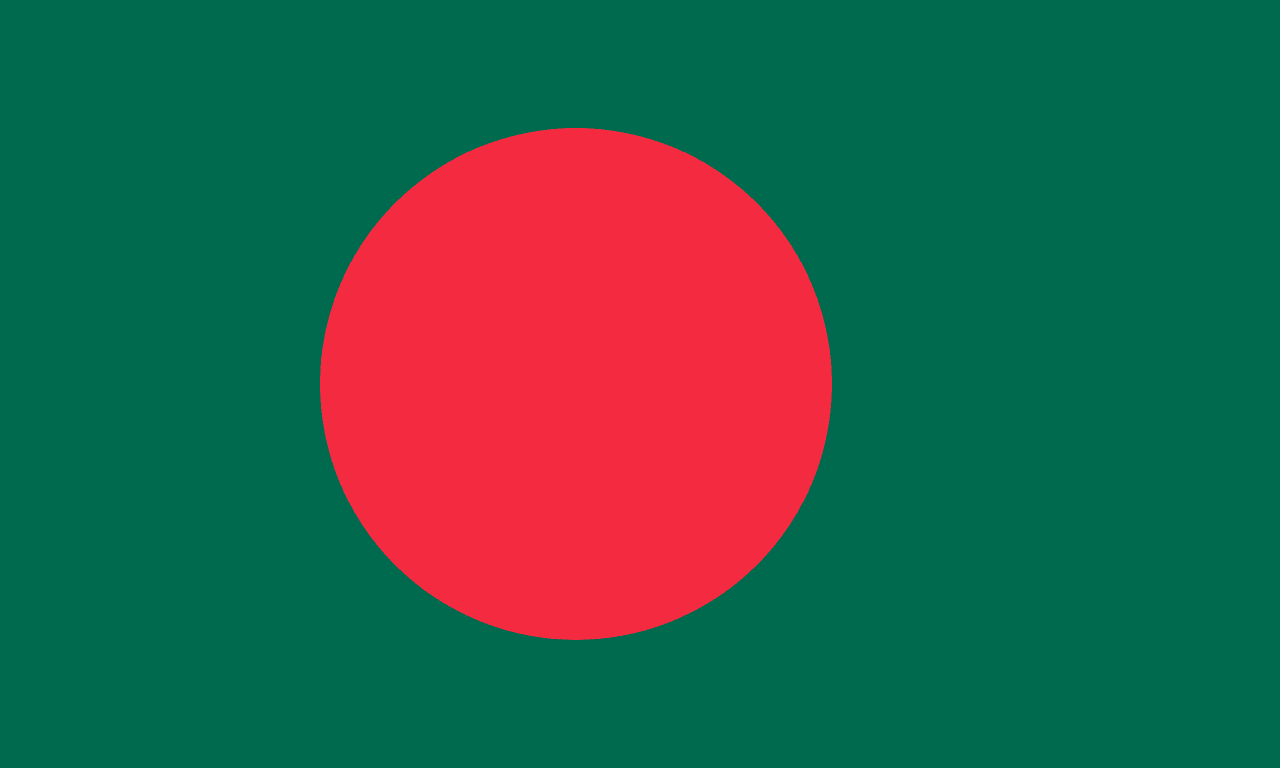
Bangladesh
Asia
A dark green field with a red circle positioned slightly toward the hoist side, representing the lush Bengali landscape and the sun rising over Bengal, as well as the blood shed during the Liberation War of 1971 and the new dawn of independence.
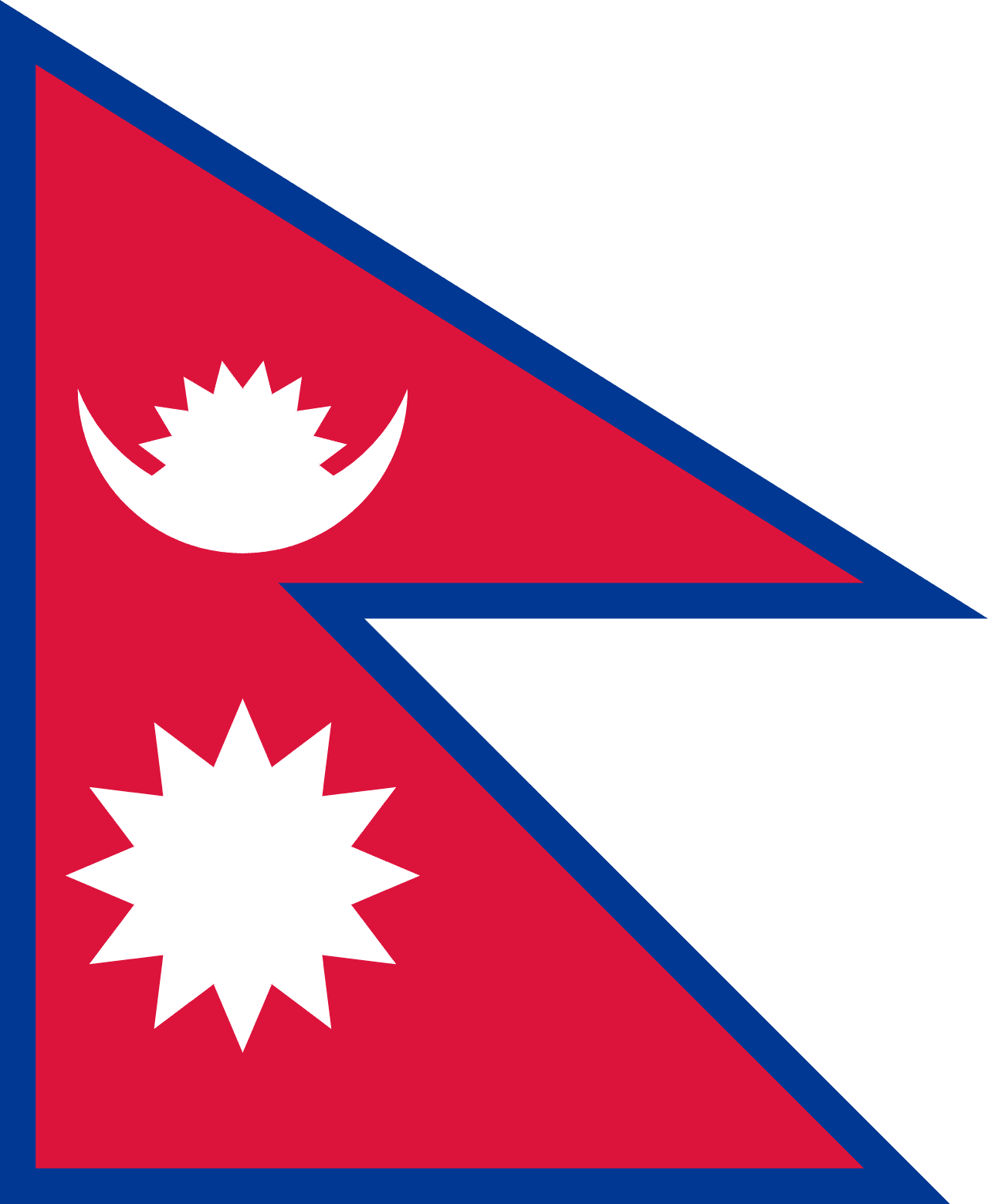
Nepal
Asia
The only national flag that is non-rectangular, composed of two stacked crimson pennons with blue borders, featuring a white moon and a white sun. It reflects Nepal’s distinct identity, culture, and Hindu-Buddhist traditions.
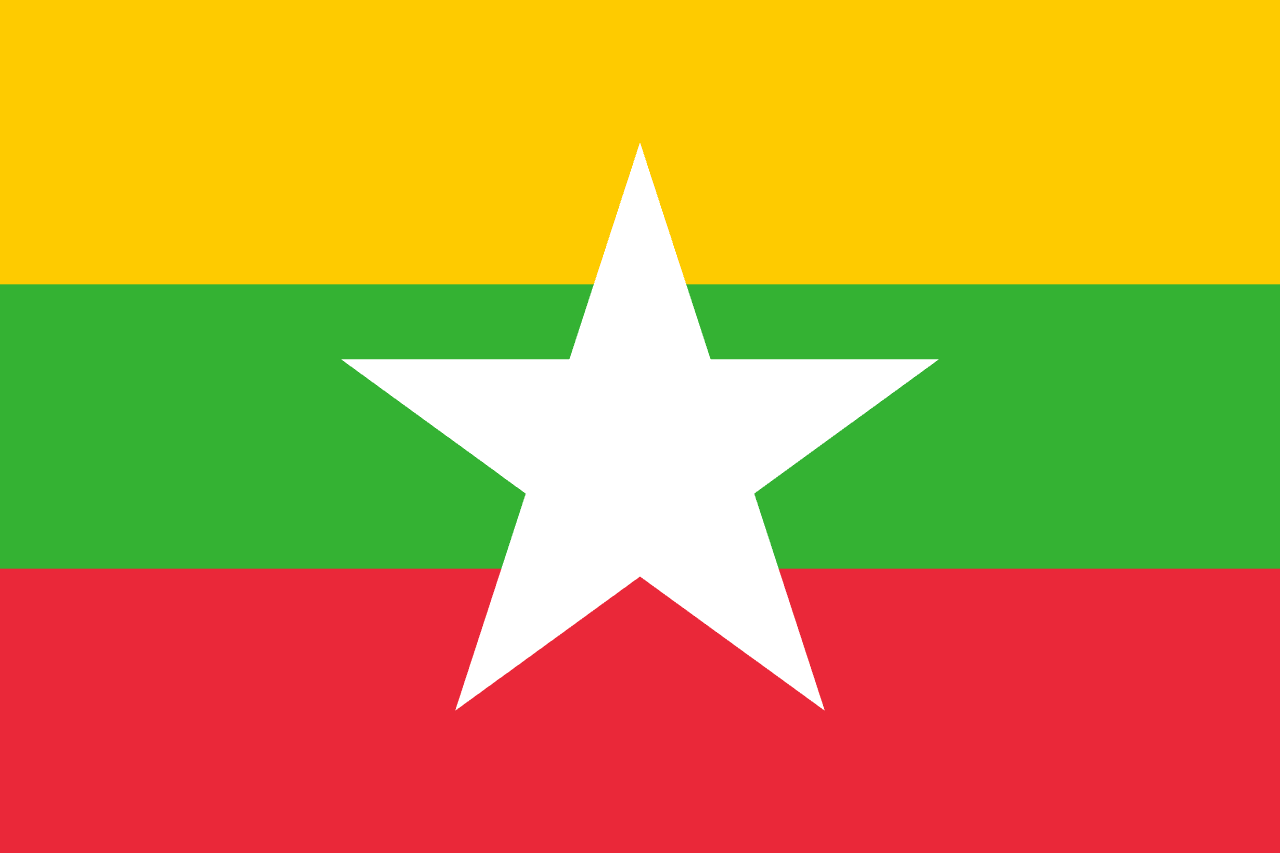
Myanmar
Asia
A horizontal tricolor of yellow, green, and red with a large white five-pointed star in the center. Adopted in 2010, the flag symbolizes unity and a new era for Myanmar.

India
Asia
Three horizontal stripes of saffron, white, and green with a navy blue Ashoka Chakra (24-spoke wheel) in the center, representing courage and sacrifice, peace and truth, faith and fertility, and the eternal wheel of law in Indian philosophy.
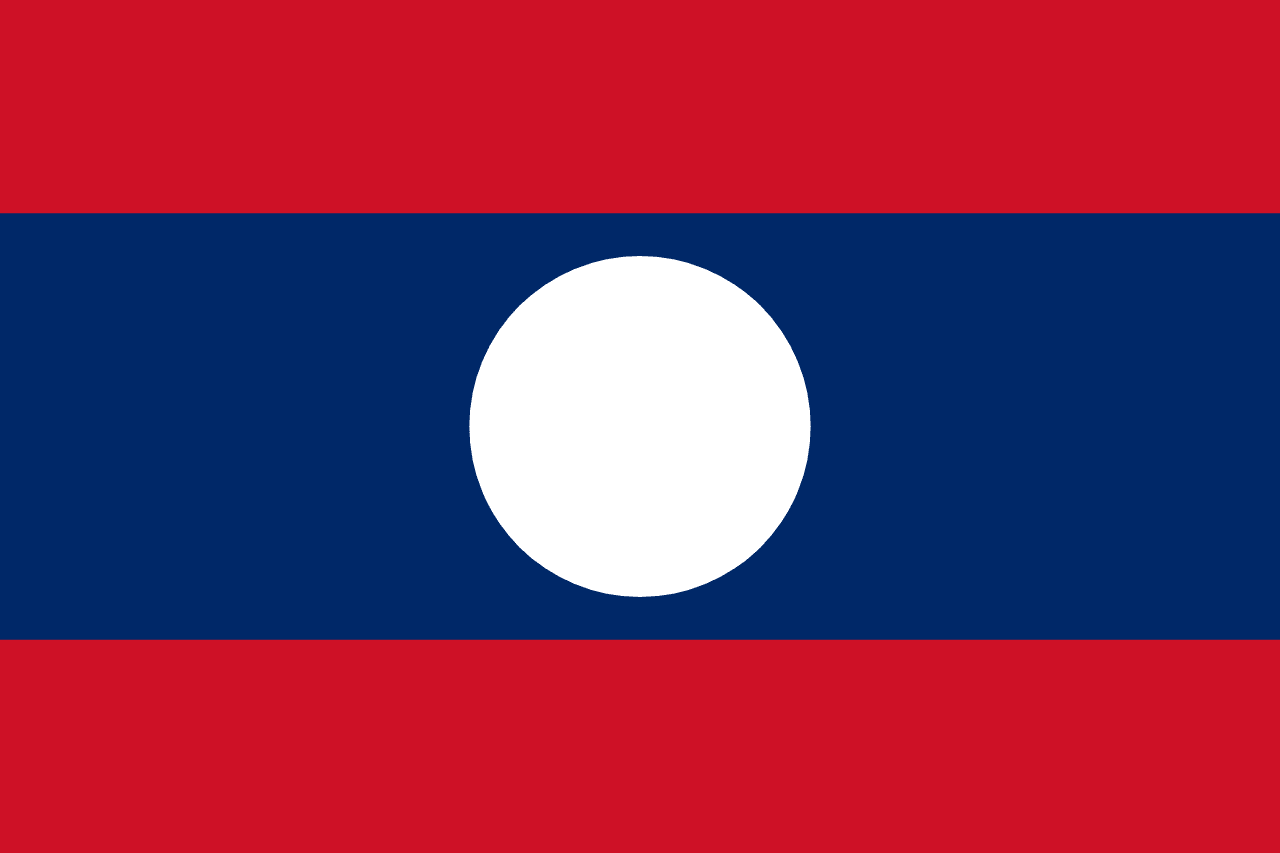
Laos
Asia
Three horizontal stripes of red, blue, and red with a white circle centered on the blue stripe, representing the blood of independence, the Mekong River, and the full moon reflecting unity of the Lao people.
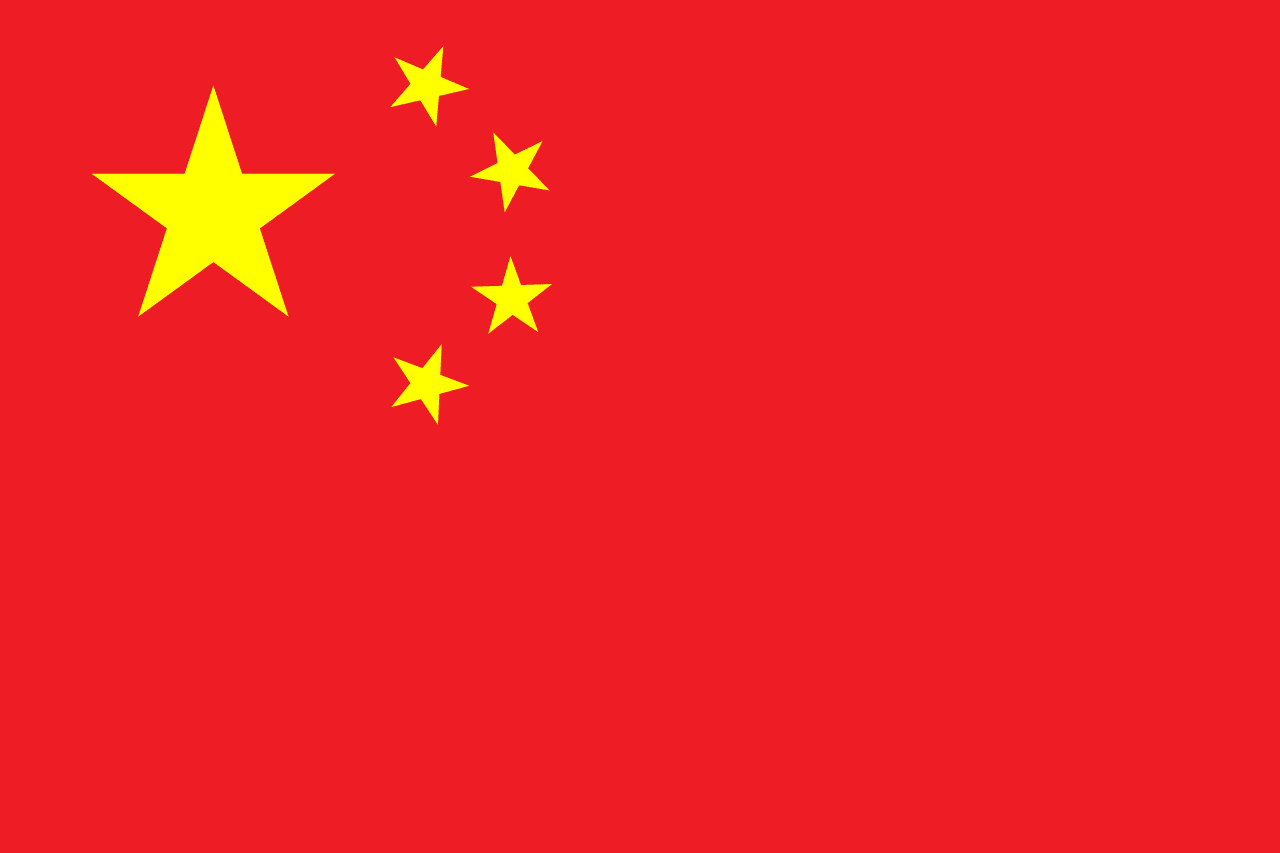
China
Asia
Red field with five golden stars representing unity under Communist leadership and the four social classes.